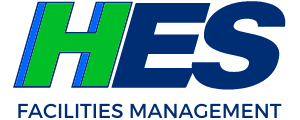Water management doesn’t always get its due. Urgent priorities – especially those related to keeping students safe and healthy – will always come first. However, taking time to plan and implement water-conserving measures has the potential to save money and natural resources.
With students back in class but winter not quite here, this is a great time of year to review water usage in your educational facilities and improve conservation efforts. Most importantly, make sure you work with the right facilities management team to assess and upgrade your water-use policies and equipment.
Why conserve water?
We’ll start with the most obvious reason: clean water is a finite resource, and we should all take steps to preserve it. It’s just the right thing to do.
That’s a long-term view, but there are near-term benefits for schools, too.
For instance, administrators always feel the pressure of budget constraints, and COVID-19 has made school finances even more challenging. Cost-saving measures that might have been considered “nice to have” two years ago are now squarely at the forefront for schools of all sizes.
At the same time, water and wastewater costs have risen steadily over the past decade, even ahead of the consumer price index. Reduced water use translates directly to reduced spending.
In addition, today’s school communities – particularly in higher education – are more aware and focused on environmental issues.
In fact, a recent survey of 7,000 higher education students revealed that 92% of respondents agree that sustainable development is something which all universities and colleges should actively promote. As prospective students expect colleges and universities to have robust sustainability measures in place, that includes sustainable water use.
So, whether in terms of attracting students or buffering the budget, water conservation has real benefits for educational administrators.
How do schools use water?
Let’s separate water use in schools into three main “buckets”:
- Domestic
- Landscaping
- Mechanical
Domestic water use basically keeps educational facilities clean and sanitary. This includes water for restrooms, dormitories, locker rooms, kitchens, cafeterias, and laundry.
Landscaping water use is pretty self-explanatory. Athletic fields and campus green spaces require regular watering, and decorative fountains or reflecting pools can create a beautiful, welcoming space.
Finally, mechanical use includes water required to keep HVAC systems and other “back of house” operations running smoothly.
How do schools use water?
It’s probably not surprising that restrooms and other domestic uses (showers in dormitories, for example) consume the most water in schools – as much as 45 percent, according to the Environmental Protection Agency (EPA). Second but still significant, landscaping uses an estimated 28 percent of all water in schools.
It’s the outputs we might not see, however, that are the real culprits: leaks, evaporation, and wastewater.
Left undiscovered and unrepaired, a leak can waste major amounts of water – in addition to possibly damaging structures or equipment near the leak. In buildings that rely on evaporative cooling, that evaporation can be a significant factor as well. And wastewater? Without a water reuse plan in place, educational institutions have no way to recoup this potential resource.
How can schools save water?
The foundation of a water conservation program rests with your school’s broader water management plan, which will include water safety (to mitigate the risk of Legionella, for instance), flow diagrams, inspections and sampling plans, as well as conservation measures.
Build out your water conservation program by identifying three things:
- Current water consumption: how much and from where
- Conservation goals, measured in gallons per month or dollars saved
- Strategies to achieve these goals
There are tons of options, ranging from easy and inexpensive to more complex and with higher up-front costs. Consider any of these water conservation moves:
Little or no up-front investment:
- Promote water-efficient practices among students and faculty
- Ensure regular facilities inspections are done to identify and repair leaks
- Minimize evaporation by watering campus landscaping at night
- Monitor timed sprinklers to avoid “double duty” on rainy days
- Ensure any automatic sensors on toilets and faucets are functioning as intended
Some investment:
- Upgrade to water-efficient toilets, shower heads, faucets, and urinals
- Switch from drinking fountains or bottled water vending machines to filling stations for reusable water bottles
- Evaluate and upgrade food service equipment such as dishwashers
- Install drought-resistant landscaping and plants to create a beautiful campus environment with less water
Larger investment:
- Install water-efficient irrigation and sprinkler systems
- Make cooling towers and boilers more efficient by using alternative water sources, such as captured rainwater or air handler condensate
- Consider installing a water reuse system (schools adopting onsite water reuse have reported up to 95 percent reductions in wastewater discharges)
Work with the right facilities management team
Want to know more about improving your educational institution’s water usage? Contact us at info@hesfacilities.com.
Disclaimer
The illustrations, instructions, and principles contained in this website are general in scope and for marketing purposes. We assume no responsibility for: managing or controlling customer activities, implementing any recommended measures, or identifying all potential hazards.

